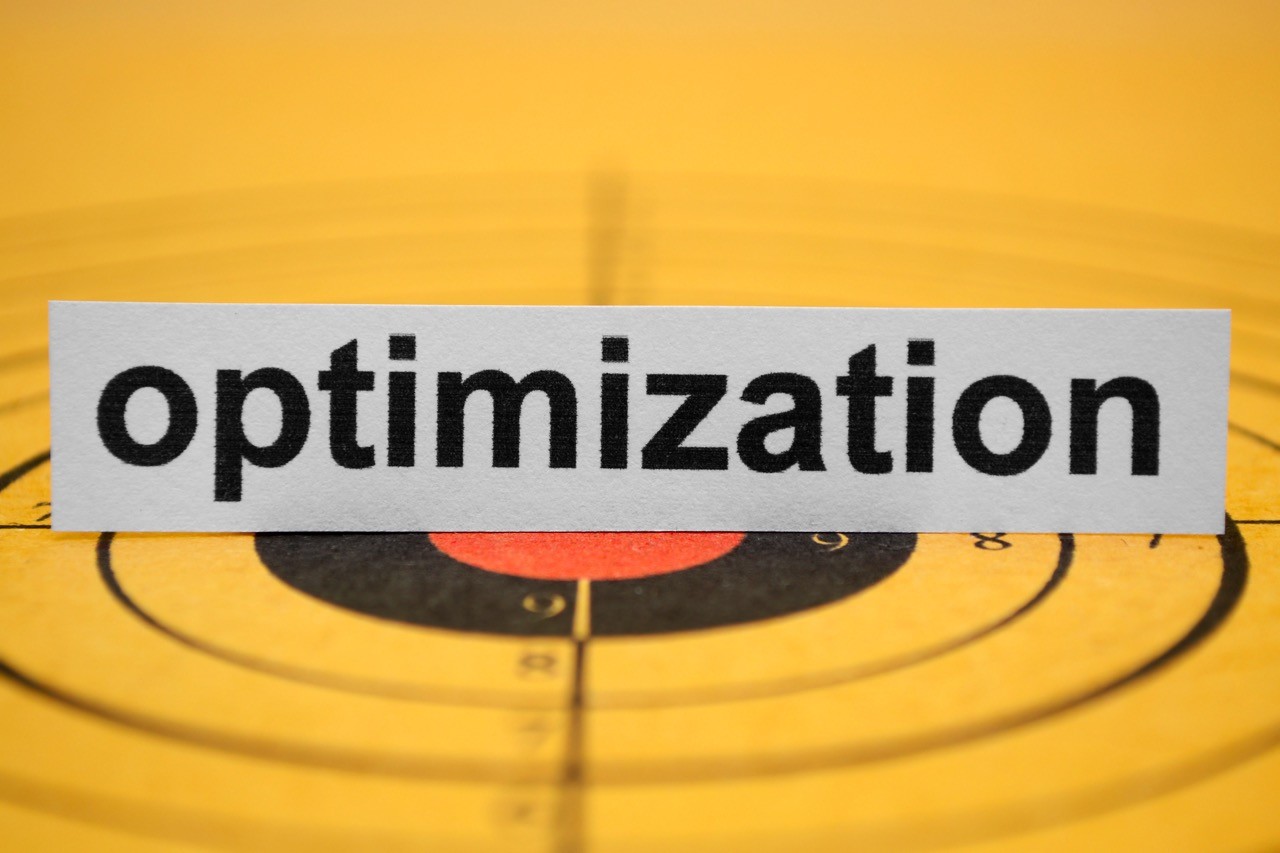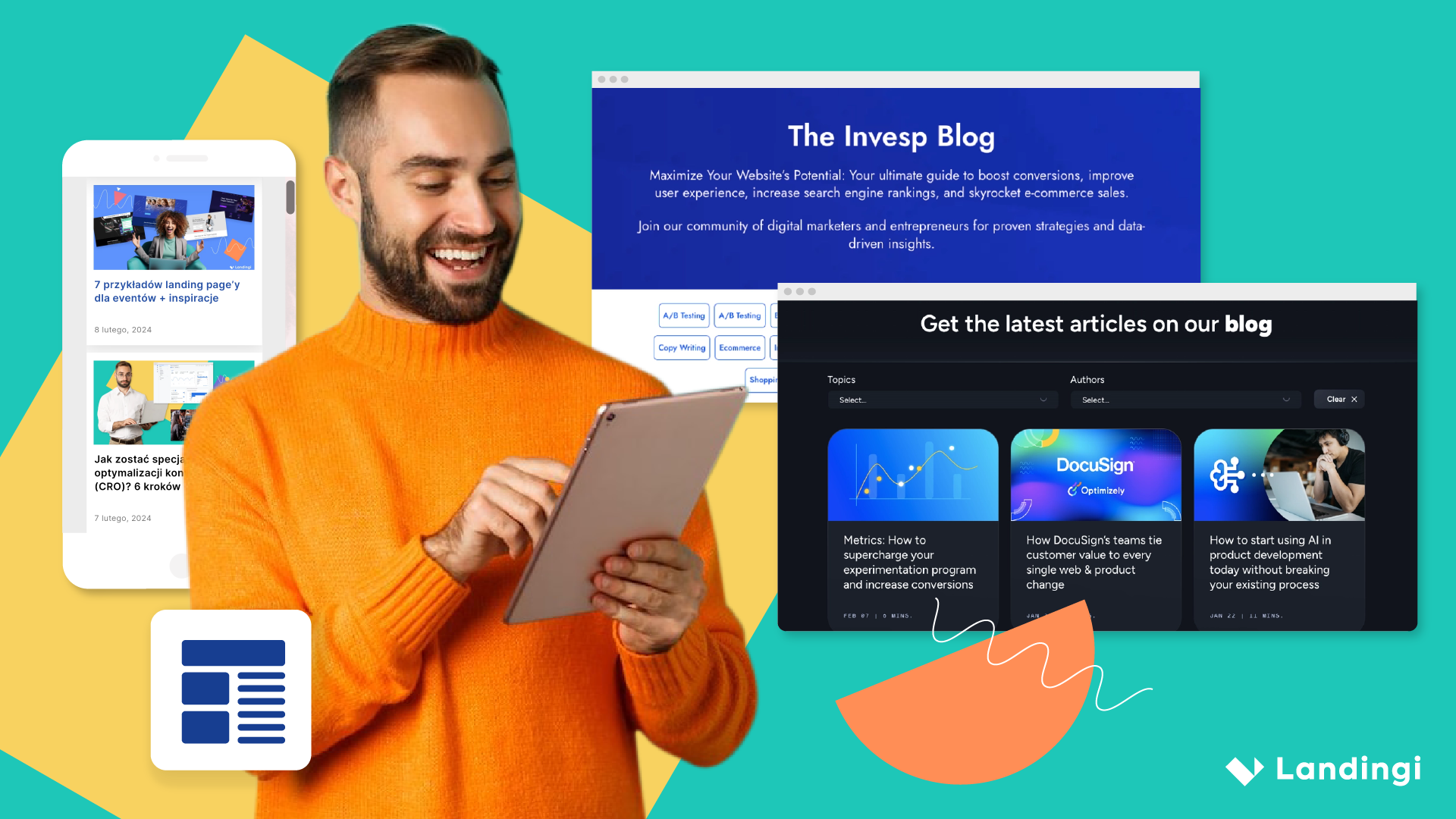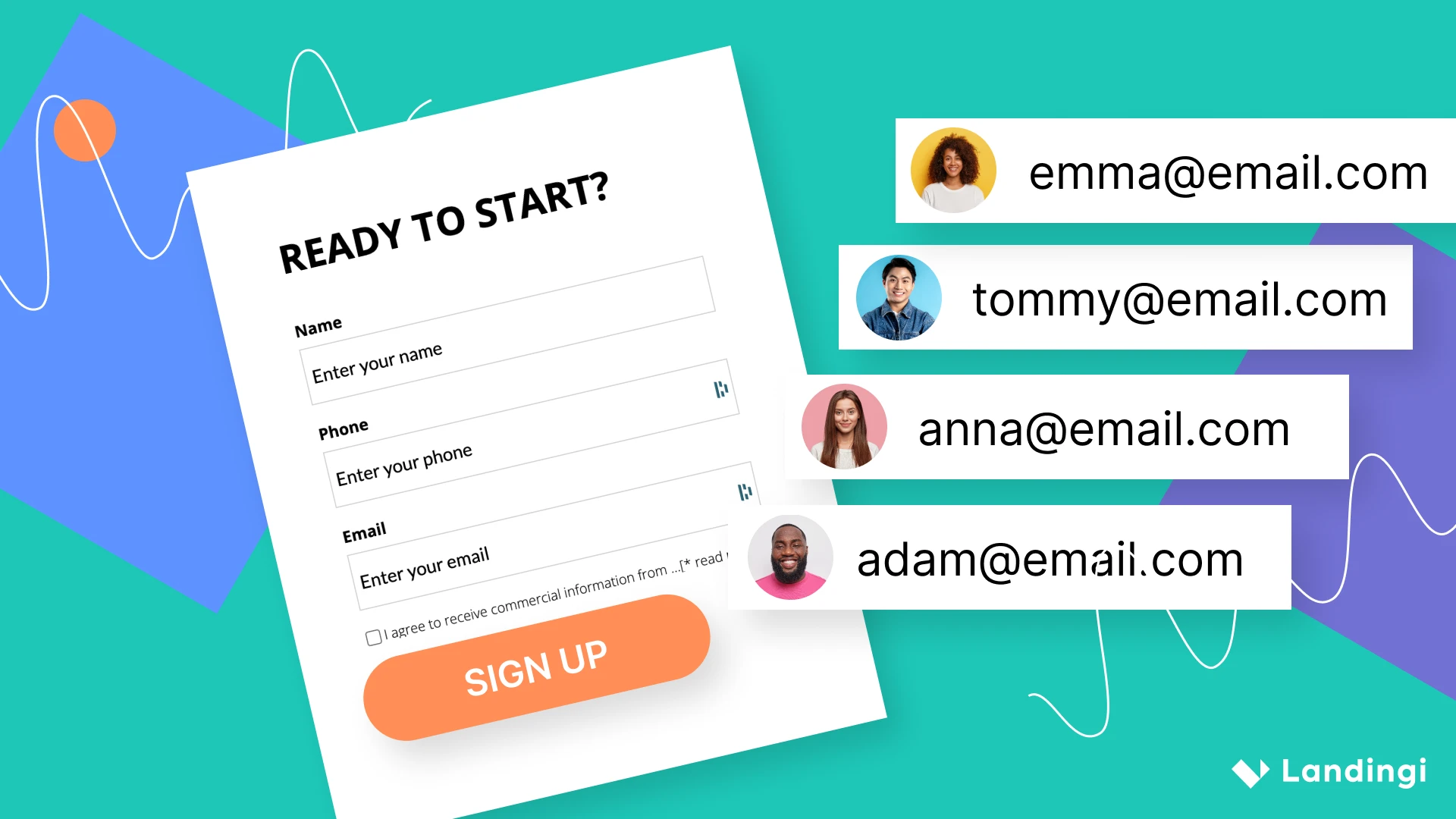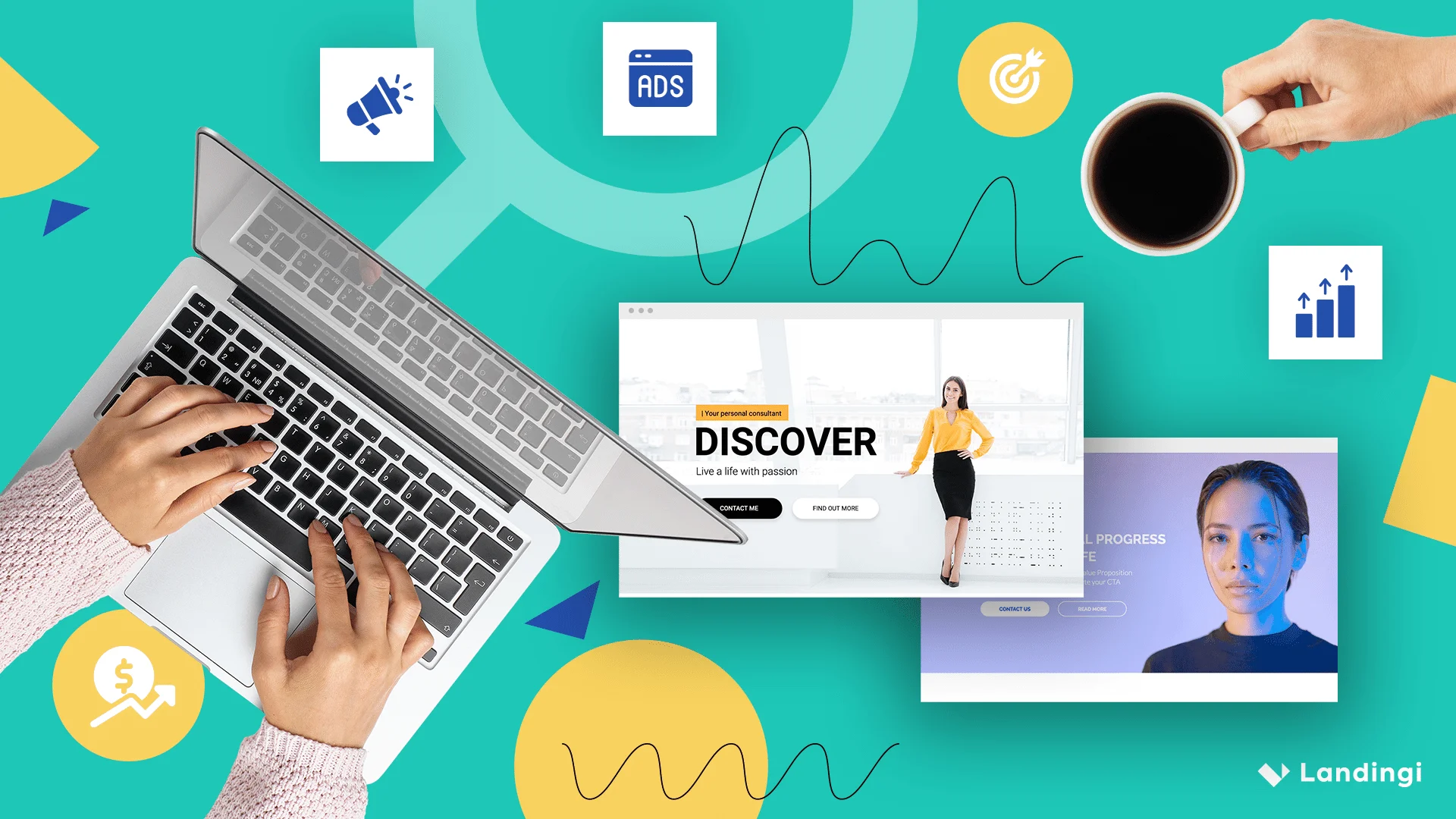If I say “landing page,” what is the first thing that comes to your mind?
If you are like most marketers of the digital age, you likely have a Godfather-esque picture in your head of the “offer” that potential consumers “can’t refuse.” Most digital age marketers and businesses implement landing pages as one of the key value drivers for both their B2B and B2C marketing and sales strategies. Yet, if you were looking at the many blog posts and articles written by marketers, you might erroneously believe that landing pages are only applicable in B2C marketing relationships.
While it is true that whether marketing B2B or B2C the number one goal is to convert, as TopRankMarketing CEO Lee Odden points out, there are slight (but significant) differences between B2B and B2C landing pages. This post will focus on the tips, tricks, and techniques for optimizing your B2B landing pages, but let’s first take at look at the main differences between the two genres of landing pages/marketing.
B2B vs. B2C Landing Pages

We often get the question, “Is there really that big of a difference between B2C and B2B landing pages?” To answer that question, it is important to quickly review some of the general differences between B2B and B2C marketing:
- Marketing Language: With B2B platforms, marketers can use industry terminology to compel a potential consumer action. Yet, in B2C, the “voice” must be relatable to the majority of consumers. How does this translate to strategy? It means that marketers use simple language, more buzzwords, and less technical jargon for B2C target markets.
- Consumer Motivation: B2Bers are seeking value in the form of expertise. They want a product or service that will meet the needs of their business. B2Cers, on the other hand, are looking for discounts, deals, and entertainment. It therefore logically follows that B2B purchases tend to be influenced by logic, while B2C purchases tend to be influenced by emotion (the age old logic vs. emotion debate).
- Content Details: Typically, the content required for successful B2B marketing is highly detailed and dedicated to educating and providing potential consumers with expertise. The ideal B2B consumers want to make informed decisions, while B2Cers typically just want to enjoy themselves. B2Bers expect the attention and focus of executives, while B2Cers want sharable and social driven content. This also means that the content length is likely to differ for both.
- Purchase Cycle: The B2B purchase cycle tends to be much longer than that of a B2Cer. Why? Well, as B2Bers have a much longer chain of command to deal with when making a purchase, they are often delayed by their respective procurement, accounting, and legal departments. This means that B2Bers must be carefully nurtured throughout the entirety of the purchase relationship. B2Cers, on the other hand, purchase to satisfy immediate needs. This means that their decision-making process is much faster, and is also made with peer influence.
- Distinct Problems: The most common problem that occurs with B2B marketing is that marketers lack the resources (i.e. time and budget) to create content that truly provides expertise and enhanced value. This is the opposite of B2C marketing, where more cost effective channels for content dissemination exist. As a B2B purchase is likely to be contractual and last a number of years (as opposed to a single B2C purchase), this is an important difference that can affect the tactical implementation of a landing page strategy.
As we can clearly see, the oft repeated “logic vs. emotion” mantra of B2B and B2C marketing is just one of the many differences between the two types of marketing. The real questions is, how do these differences manifest in landing pages? Remembering that the number one goal of both is to make a conversion, each genre requires focused targeting, compelling pages, and value driven content. It is with this notion of “content” (i.e. the telling of a story) where we truly begin to see the need for diversity when implementing B2B landing page strategies.
Some recent studies highlight this exact point. While a recent report by The Economist Group found that 85% of B2B content is focused on brand story and thought leadership, other studies show that B2C is focused on social sharing, garnering traffic, and creating engaging user content. In plain English, this means that while B2C landing pages are focused on quick sales, price points, and social sharing, B2B landing pages focus on nurturing a relationship. It is likely that they will one day replace the business “happy hour” and golf outing as the most effective method for relationship building in the digital age. It is here where high value content such as whitepapers and in-depth case studies have the potential to demonstrate technical expertise, and where free trials and ebooks go a long way in demonstrating industry authority. While B2C landing pages look to take advantage of short consumer attention spans with immediate value propositions, B2B landing pages are used to draw in and target leads for future conversion (68% of leads according to Marketo).
Understanding the differences described above, does it make sense to treat your B2B landing pages the same way you would treat a B2C landing page? B2B expert Paul Dunay would say (and I agree):
NO!
Therefore, without further delay, let’s review five ways that you can optimize your B2B landing pages today.
#1 Clear CTAs
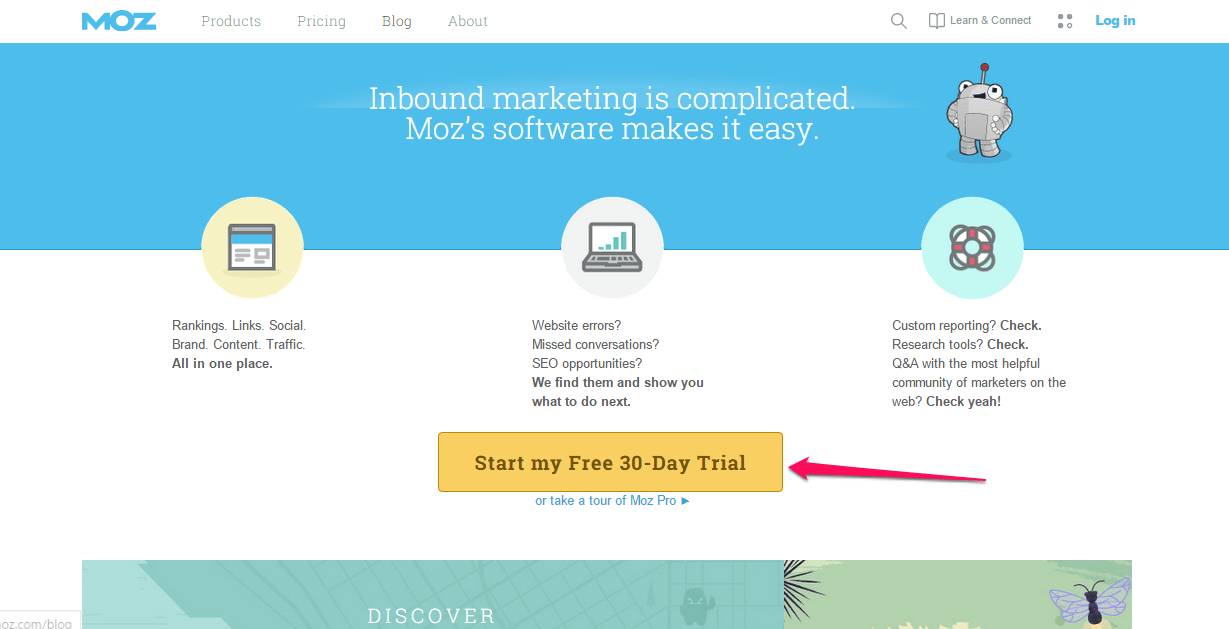
CTAs are the preferred marketing tool for captivating your B2B target audience, educating them, and increasing conversion rates. Yet, most B2B marketers not only fail to use them properly, over 70% of small business B2B sites fail to use them at all! It would be great if landing page visitors knew exactly what to do or where to go… but the truth is, they don’t. It is unrealistic to expect them to know what to do, or what action to take next. It is here that CTAs are key. A great example can be found in the picture above. Moz uses a simple and minimalistic approach in directing their potential clients to take a value driven next step. “Start my Free 30-Day Trial” is not only compelling, but it is an example of a value proposition that you can’t help but click. Fearful of converting these free trials? Don’t be, as there are at least five ways to do so.
#2 Compelling Value Propositions

Remember, B2B consumers are all about education and value. Luckily for marketers, there are a plethora of ways in which this value can be transferred. From whitepapers, to ebooks, to free and informative webinars, the value proposition should be relevant, quantified, and unique. An ideal value proposition should be a clear statement that explains how your product or service will solve your B2B customer’s problems (i.e. relevant), it should provide actionable benefits (i.e. quantified value), and it should tell your ideal customer why they need to engage with you, and not the competition (i.e. unique). It is not a slogan or a headline, but it should be one of the first thing your visitors see on your landing page. The above landing page meets all three of these value requirements in the form of a whitepaper. The page explains the benefits of the whitepaper (as a guide to enhanced campaigns), the value (what the reader will learn), and the uniqueness of the offer (i.e. “Google’s largest search advertising API partner”).

#3 Video Implementation

While non-traditional, video solutions go a long way in clearly communicating your B2B value proposition to your potential consumers. Why? Because video gives viewers more than just entertainment, it provides conversion power by tapping into the notoriously short attention span of website visitors. Instead of telling your visitors about all the great things your product or service will do for them, you get to show your visitors all the great things your product or service will do for them. Videos keep visitors on your page longer, they build trust, and they deepen the consumer connection. Salesboard (in the photo above) does exactly this by providing not one, but two separate videos. One video thoroughly explains their value proposition, and the other, the story of their company. Together with their compelling CTAs, they offer quite an effective and user optimized landing page.
#4 Concise Headlines

Why all the hoopla about headlines? Well, more often than not, B2B topics are very complex and specialized. Marketers are attempting to sell potential customers on business solutions that will take a complex topic and provide streamlined relief. This has a tendency to make the concise explanation of a value proposition quite difficult. One of the best ways to do this is by employing “power words” in your headlines. These are words or phrases that that will not only invoke emotion, but convey true value (i.e. “get,” “feel,” “have,” “compare,” etc.). Headlines should convey not only what a company does, but why it is valuable. In the Emove headline above (admittedly directed at both B2B and B2C audiences), we see that both items are clearly present. The moving company marketplace immediately indicates that they provide “removalist” solutions, and that visitors can “Compare Three FREE Removalist Quotes.” By keeping to the basic headline formulas of digital age success (testimonials, cliffhangers, value propositions, listicles, and “how-to’s”), your B2B headlines will be fully optimized and ready to transfer direct value.
#5 Redirect With a “Thank You” Page

A final optimization tip for B2B landing pages is another often overlooked technique for increasing landing page ROI and conversion rates. If you have reached the point where a visitor opts-in for your product, service, or added value, you are losing an opportunity to further expose this visitor to your other channels of value if you do not use a homepage redirect from your thank you page. The thank you page provides an additional opportunity to nurture the purchase relationship by promising additional future content, and by providing additional instructions. The HubSpot thank you page in the photo above allows the landing page visitor to download the value, share it via social media, and further engage by learning more about the webinar. Additional B2B elements can be added, including surveys, content links, social proof (i.e. testimonials), videos, and many more. Optimize your thank you pages today, and take your landing page “post conversion” to the next level.

In Conclusion…
Remember, not all landing pages were created equal. If you desire to nurture, develop, and engage B2B purchasing relationships over the long-term, you need to optimize your landing pages to do so. Implement the simple tips outlined above, and get ready to watch you B2B landing pages shine.
